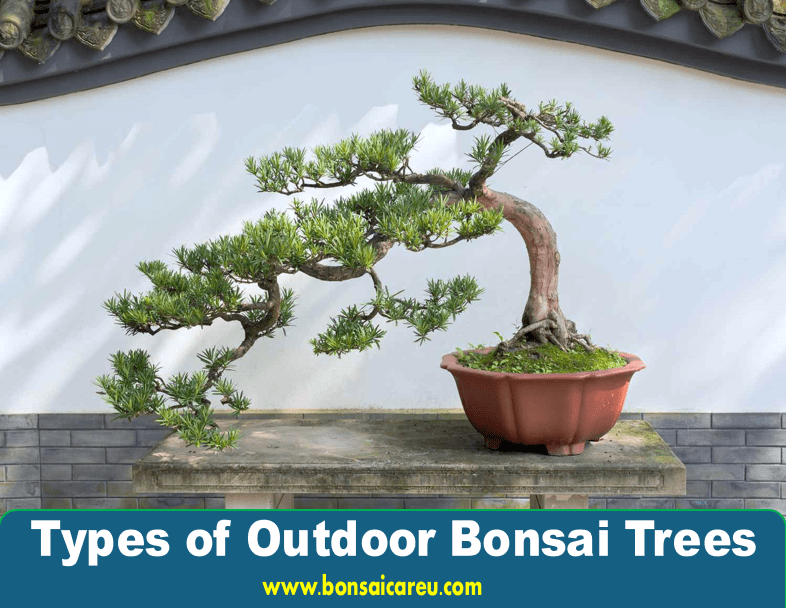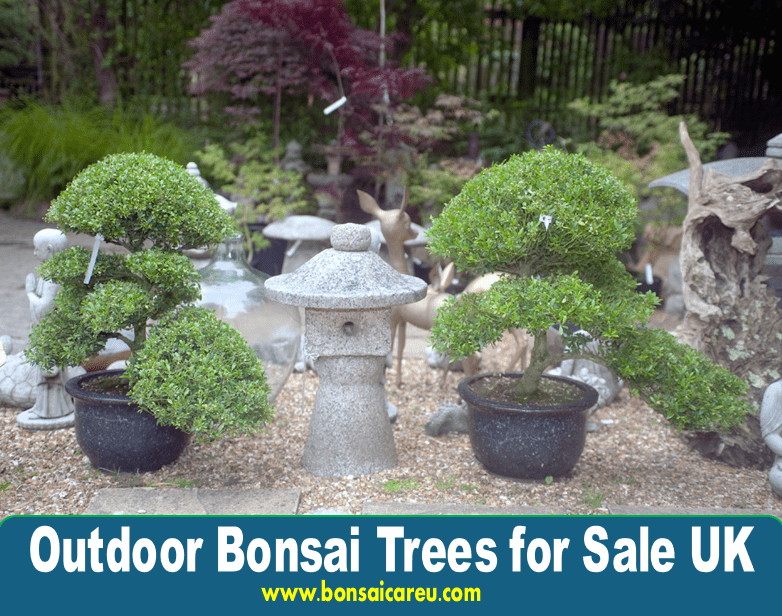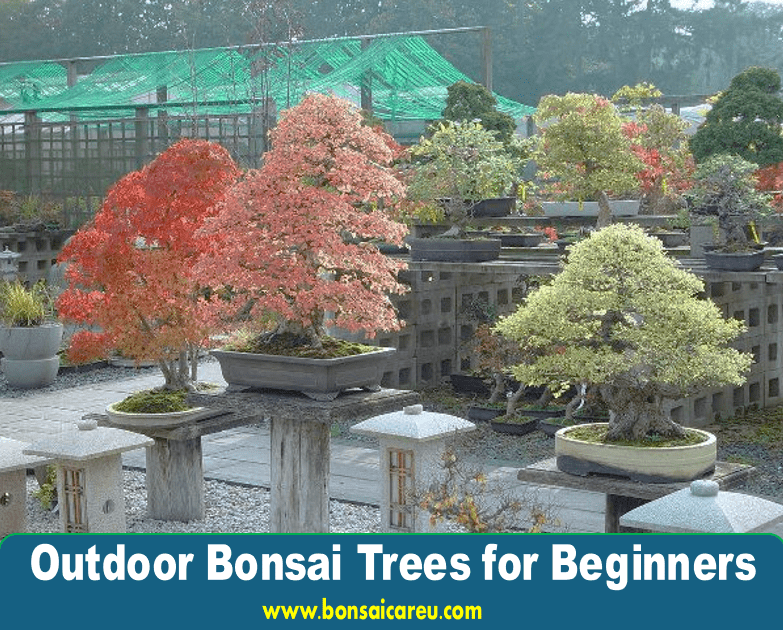Can Bonsai Trees Be Outside? Bonsai trees can thrive outside, benefiting from the four seasons, temperature changes, and high humidity. Placing them outdoors is crucial for their health and growth.
It is a common misconception that Bonsai trees should be kept indoors, as most species prefer being outside. The exposure to natural elements helps in their development and overall well-being. While some Bonsai species can be kept indoors year-round, many thrive best when placed outside, especially during the warmer months.
Proper care, including adequate sunlight, watering, and air circulation, is essential for successfully cultivating Bonsai trees. By understanding the specific needs of each tree species and providing the right environment, enthusiasts can create beautiful and healthy outdoor Bonsai displays.

Bonsai Trees In Their Natural Habitat
A common misconception about Bonsai trees is that they should be kept indoors. However, most trees should be placed outside in their natural habitat, exposed to the four seasons, temperature changes, and relatively high humidity. Bonsai trees can survive outside if they receive proper care and attention.
The Misconception About Indoor Bonsai
Many people believe that bonsai trees should be kept indoors. However, this is a common misconception. While some species can survive indoors, most bonsai trees thrive when placed outside, experiencing the natural elements and seasonal changes.
Why Most Bonsai Should Experience The Outdoors
Bonsai trees have evolved to thrive in their natural outdoor habitat. When kept outside, they are exposed to the four seasons, temperature changes, and higher humidity, essential for their overall health and well-being. Outdoor conditions provide the optimal environment for bonsai trees to grow, develop, and flourish. Placing bonsai trees outdoors allows them to receive ample sunlight, which is essential for their growth and photosynthesis.
Additionally, the outdoor environment promotes better air circulation and natural rainwater, which helps maintain the bonsai trees’ overall health. While some species can tolerate indoor conditions, most bonsai trees benefit from being placed outside, where they can truly thrive and showcase their natural beauty. In conclusion, understanding the natural habitat of bonsai trees is crucial for their care and growth. By allowing them to experience the outdoors, bonsai enthusiasts can ensure the well-being and longevity of these unique and cherished miniature trees.
Seasonal Considerations For Bonsai
Bonsai trees thrive best when placed outside, exposed to the four seasons, with temperature changes and relatively high humidity. Most trees should not be kept indoors, as they require the natural elements for their growth and development. Proper care and maintenance are essential for outdoor bonsai trees to survive and flourish.
Spring And Summer Care
During the spring and summer months, Bonsai trees thrive when kept outside. They need plenty of sunlight and fresh air to grow and develop their foliage. The ideal location for your Bonsai tree is near a large, well-lit window without curtains. It should be approximately one and a half meters away from the window to avoid direct sunlight. Bonsai trees require regular watering during the warmer months. The more sunlight and warmth your tree receives, the more often it will need water. Proper watering is essential to the health of your tree. Watering your Bonsai tree in the morning or evening is recommended to avoid the day’s heat.
Winter Protection Strategies
During the winter months, protecting your Bonsai tree from extreme cold and frost is important. If the temperature drops below freezing, your tree may not survive. To protect your Bonsai tree, you can wrap it with burlap or bubble wrap. You can also place it in an unheated garage or shed. It’s essential to keep your Bonsai tree away from any heat sources, such as radiators or fireplaces, as this can cause the tree to dry out. Additionally, you should avoid watering your tree during winter, as the water may freeze and damage the roots.
Can Bonsai Trees Be Outside?
A common misconception about Bonsai trees is that they should be kept indoors. However, with temperature changes and relatively high humidity, most trees should be placed outside, exposed to the four seasons. Outdoor Bonsai tree care guidelines recommend using organic mediums in a Bonsai pot to avoid issues with massive amounts of rain for long periods of time. The water will run straight through the pot as it rains, pulling oxygen.
All excess water will drain straight out the bottom, leaving you with a balance of water and oxygen. In conclusion, Bonsai trees can be outside during the warmer months, while they require protection from extreme cold and frost during winter. With proper care and maintenance, your Bonsai tree can thrive outside, exposed to the four seasons.
Weather Impacts On Bonsai Health
Bonsai trees thrive when placed outdoors, experiencing the natural elements that contribute to their overall well-being. Understanding how weather conditions affect bonsai health is crucial for their care and longevity.
Rain Exposure And Bonsai Well-being
- Organic mediums in Bonsai pots facilitate proper drainage during rainy periods.
- Excess water drains out, maintaining a balance of water and oxygen essential for bonsai health.
- Consider moving bonsai under shelter during heavy and prolonged rain to prevent waterlogging.
Dealing With Extreme Temperatures
- Extreme heat can lead to dehydration, requiring frequent watering during hot spells.
- Protect bonsai from frost by moving them to a sheltered location or using frost cloth during cold snaps.
- Monitor temperature fluctuations to ensure bonsai are not exposed to drastic changes that may harm them.
Optimal Outdoor Placement For Bonsai
When it comes to the optimal outdoor placement for bonsai trees, factors such as light requirements, humidity, and air circulation should be considered. Proper placement is crucial for the health and well-being of your bonsai. Let’s explore the key aspects of outdoor placement to ensure your bonsai thrives outdoors.
Light Requirements
Bonsai trees require ample sunlight to thrive. Place your bonsai in a location that receives at least six hours of direct sunlight daily. If your bonsai lacks natural light, you may need to supplement it with artificial grow lights to ensure optimal growth and development.
Balancing Humidity And Air Circulation
Humidity and air circulation are essential for the health of your outdoor bonsai. Ensure that the outdoor environment provides adequate humidity levels, as this will prevent the soil from drying out too quickly. Additionally, promote good air circulation around your bonsai by avoiding crowded spaces and ensuring the surrounding foliage does not obstruct airflow.
Transitioning Bonsai Between Environments
Transitioning bonsai trees between indoor and outdoor environments requires careful consideration to ensure their health and vitality. While bonsai trees thrive outdoors, they may need to be brought indoors during certain conditions or seasons. Understanding the benefits of outdoor acclimatization and knowing when to bring bonsai indoors is essential for the well-being of these miniature trees.
The Benefits Of Outdoor Acclimatization
Acclimatizing bonsai trees to outdoor conditions offers numerous advantages. Exposure to natural light and fresh air fosters robust growth and enhances the tree’s overall vigor. Outdoor environments provide optimal temperature variations and seasonal changes crucial for the bonsai’s development. Additionally, outdoor acclimatization can help strengthen the tree’s resistance to pests and diseases, contributing to its long-term health.
When To Bring Bonsai Indoors
Understanding when to bring bonsai trees indoors is essential for their well-being. During extreme weather conditions, such as excessive heat, cold, or heavy rain, it may be necessary to move the bonsai indoors to protect it from potential harm. Additionally, bringing the bonsai indoors during winter or when temperatures drop below the tree’s tolerance level can help safeguard it from adverse conditions. By being attentive to these factors, bonsai enthusiasts can ensure their cherished trees’ continued health and vitality.
Species-specific Outdoor Suitability
Indoor Vs. Outdoor Bonsai Species
Outdoor exposure to seasons benefits most bonsai trees, contrary to the common belief of indoor confinement. Optimal growth occurs outdoors.
Selecting The Right Bonsai For Your Climate
Choose bonsai species suitable for your local climate to ensure thriving growth. Different species have specific outdoor requirements.

Frequently Asked Questions For Can Bonsai Trees Be Outside?
Can I Put My Bonsai Tree Outside?
Yes, most bonsai trees thrive outdoors, benefiting from the four seasons and higher humidity levels. Placing them outside allows for proper temperature changes and natural exposure. Outdoor care is crucial for their overall health and well-being.
How Cold Is Too Cold For Outdoor Bonsai?
Outdoor bonsai should not be exposed to temperatures below 50°F as it can harm them.
Can I Leave My Bonsai In The Rain?
Yes, you can leave your bonsai in the rain in an organic medium in a bonsai pot. The excess water will drain out, maintaining a balance of water and oxygen for the tree.
Where Is The Best Place To Put A Bonsai Tree?
Place your bonsai tree near a well-lit window, within 1. 5 meters, for ideal light exposure. Outdoor placement is best for seasonal changes and humidity.
Can Bonsai Trees Survive Outside In Winter?
Bonsai trees can survive outside in winter if protected from extreme cold and frost.
How Much Sunlight Do Bonsai Trees Need Outside?
Bonsai trees need plenty of sunlight when placed outside to thrive and grow healthily.
Conclusion
Bonsai trees thrive outdoors, exposed to the four seasons, temperature variations, and humidity. Placing them outside benefits their health and growth. Remember, proper care and attention are essential for the well-being of your outdoor Bonsai trees.


